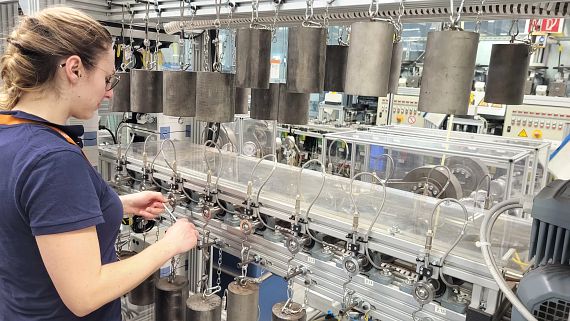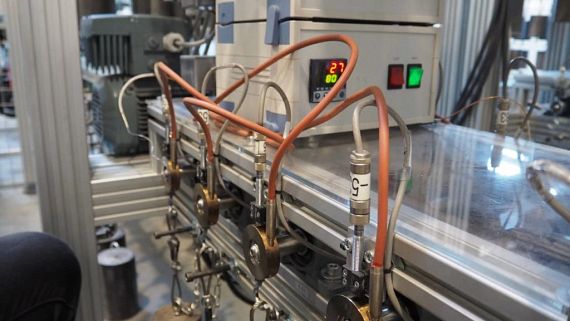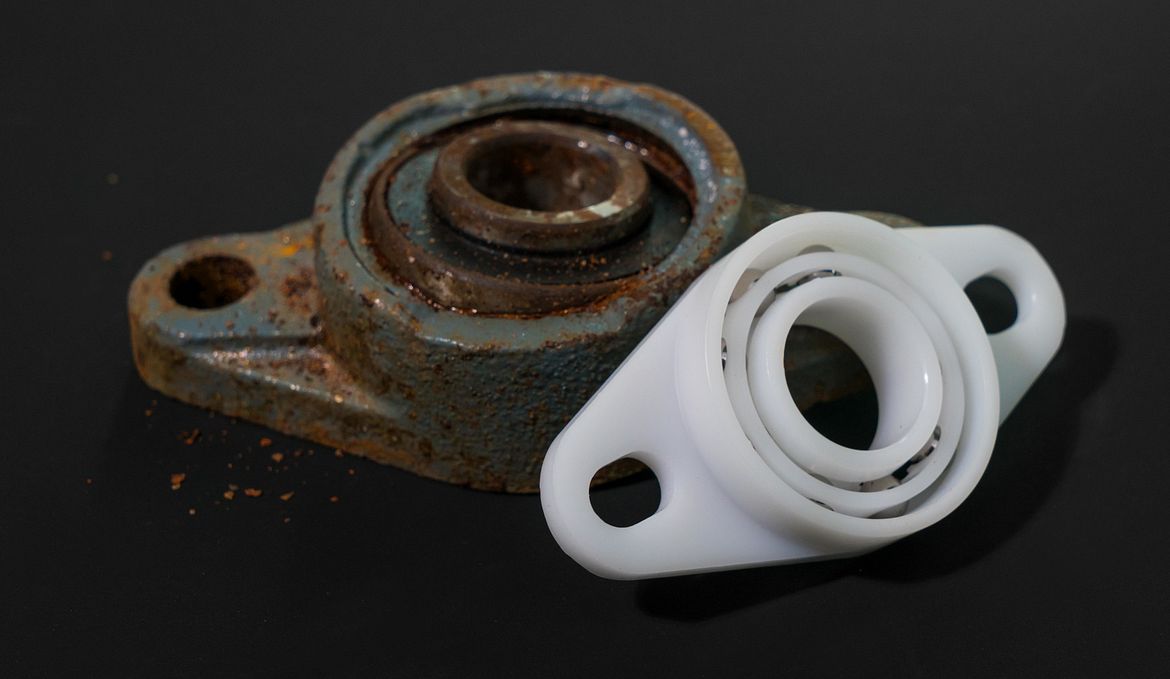Test laboratory for polymer ball bearings
Our test laboratory for polymer ball bearings generates the knowledge essential for our new and advanced product developments. There is even more benefit to our customers, since we pool our test results and experience in our online tool. They help in selecting the right product for our customers' individual applications.In the video you can see which ball bearing types we test: from deep groove ball bearings, thrust bearings, conveyor rollers, ball transfer units to other types and special parts.
This is what awaits you on our test laboratory page:
Test rigs in the ball bearing test laboratory
Radial deep groove ball bearing test rig:
- Test rigs with integrated sensors (DAQ) for simultaneous measurement of wear, load absorption up to 250N, various service life and temperature tests
- Max. speed 5,000rpm
- Movement: outer race fixed, inner race rotates
- Installation size: 6,000


Rotation test rig
- Tests at high speeds and low loads (5,000rpm, 10N)
- Ongoing tests with in-house xirodur materials and iglidur cage materials
- Installation size: 6,000
Influence of the cage material on ball bearing wear
The difficulty lies in the fact that high speeds (e.g. 2,000rpm) lead to high centrifugal forces in the balls. This accelerates the balls outwards. The cage material requires a certain stability, cage pockets would otherwise expand, giving the balls more clearance and freedom of movement. If the balls can no longer maintain the correct position, there is more wear and the bearing fails sooner than expected. We use reinforcing materials to increase cage material stability, and there is sliding friction between the balls and the cage. Solid lubricants improve sliding performance. That is why we use iglidur materials for cages. They contain improved additives that enhance stability and sliding properties.
Stainless steel balls were used for the tests.

- Picture on the left: unreinforced material, before the test
- Picture on the right: unreinforced material, after the test

- Picture on the left: reinforced iglidur material, before the test
- Picture on the right: reinforced iglidur material, after the test
Ball bearings under water: igus vs. metal bearings
igus has the world's largest test laboratory for plastics in moving applications in Cologne with around 12,000 tests per year. This includes, for example, tests that demand everything from the most diverse materials under the most adverse conditions. In this test, a xiros fixed flange ball bearing is pitted against its metallic counterpart in a salt water test. Two ball bearings under water: who wins?Test set up
The test experiment was as follows: a container was filled with salty seawater and heated to +80°C. Two ball bearings, a conventional metal fixed flange bearing and a xiros fixed flange ball bearing made of xirodur B180, were then placed in the salt solution for 120 hours. In the xirodur B180 material, igus has a high-performance plastic that has been subjected to numerous tests and further developed over many years. In order to get a corrosion process going faster, both ball bearings were not entirely in the salt water bath and were in contact with air.Metal bearing corrodes after just a few hours
In the comparison, the plastic xiros fixed flange ball bearing emerged as the clear winner, because the metallic bearing corroded after only a few hours. Rust settled on all components of the bearing. The plastic ball bearing, on the other hand, remained completely unaffected by the aggressive saltwater environment and the high temperature. Rust or change in colour of the material? No such luck!The xiros bearing is therefore particularly suitable for applications in cleanroom or the medical and food industries . In general, ball bearings consist of four components comprising an inner and outer race, cage and balls as rolling elements made of stainless steel or glass. The most important technical advantage of xiros plastic ball bearings over their metal counterparts is their hygienic dry operation, which means that our ball bearings do not require a single drop of lubricating oil. The question that arises about the service life of xiros ball bearings can be answered with our online service life calculator.
Which ball bearings are suitable for electroplating equipment?
The electroplating process places very high demands on the materials used in electroplating plants. In electroplating, electricity is sent through an electrolytic bath. The metal that is to be applied is located on the positive pole (e.g. copper or nickel), the object to be coated at the negative pole. Since this is an electrochemical process that usually also uses strong chemicals in the electroplating bath, metallic ball bearings are not suitable. When ball bearings are installed, they are usually plastic ball bearings.Ball bearings made of technical ceramic can also be used but are considerably more expensive. In the following: plastic versus metal in an electroplating bath.